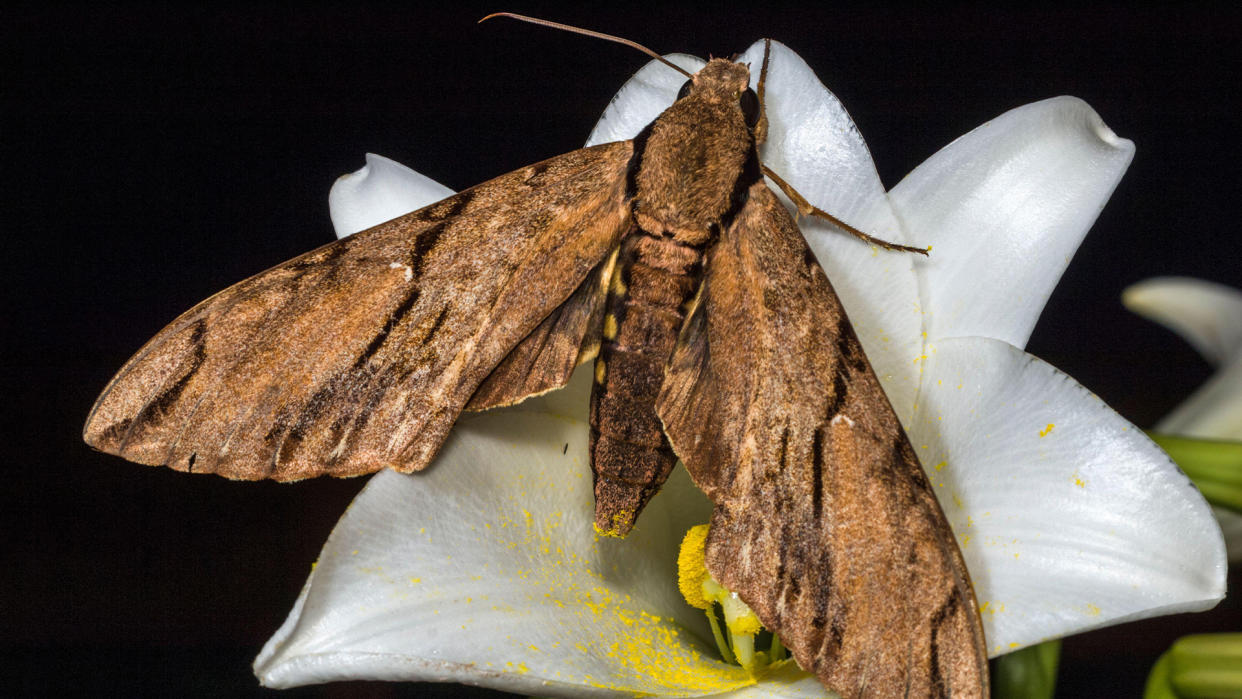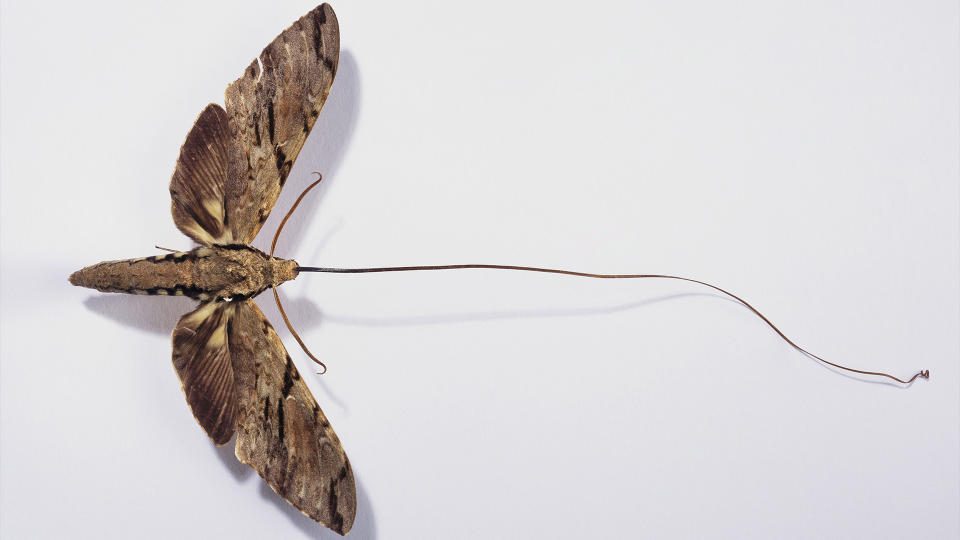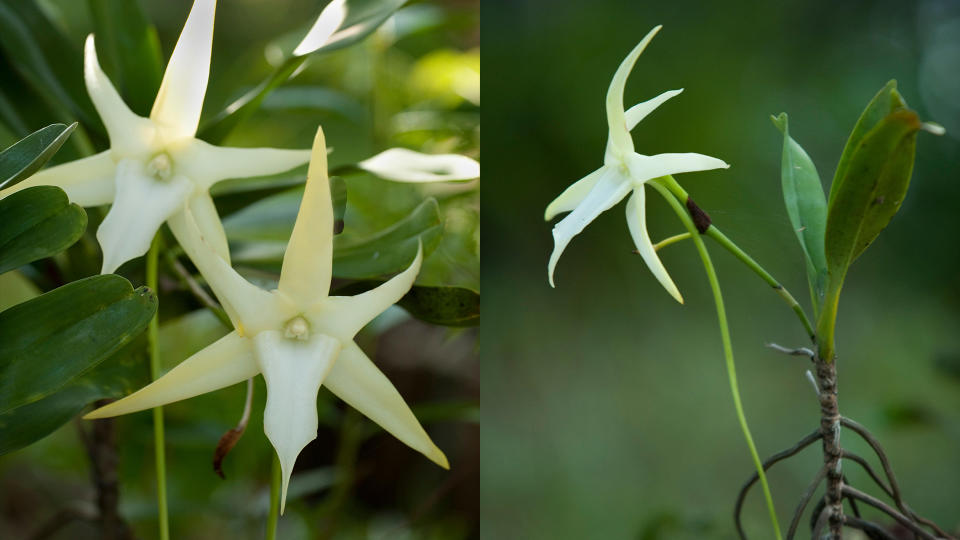Wallace's sphinx moth: The long-tongued insect predicted by Darwin a century before it was discovered

- Oops!Something went wrong.Please try again later.
- Oops!Something went wrong.Please try again later.
Name: Wallace's sphinx moth (Xanthopan praedicta)
Where it's found: Lowlands of Madagascar
What it eats: Nectar of Darwin's orchid (Angraecum sesquipedale)
Why it's awesome: In 1862, Charles Darwin received a Madagascan orchid in the mail. The flower had an extraordinarily long nectar tube, called a nectary, measuring 1 foot (30 centimeters) in length. In a letter to a friend, he described the orchid as "astounding" and wondered what pollinator might be able to feed on the nectar. "Good Heavens what insect can suck it," he wrote. A couple of days later, in another letter to the same friend, he gave a more specific prediction: "what a proboscis the moth that sucks it must have!"

While Darwin predicted that the orchid would be pollinated by a long-tongued moth, when naturalist Alfred Russel Wallace described the orchid in 1867, he said some of the larger species from the the Sphingidae family of moths (known as sphinx moths or hawk moths) had proboscises almost as long as the nectary of Angraecum sesquipedale.
The two naturalists were proved right when such a long-tongued moth was found in Madagascar. It was described in 1903 as a subspecies of the Morgan's sphinx moth (Xanthopan morganii) and given the scientific name X. m. praedicta. It wasn't until the 1990s that the pollination predicted by Darwin and Wallace was observed and photographed.

RELATED STORIES
—190 years after Darwin, 2-year expedition launches to retrace his voyage around the world
—The animal kingdom is full of cheats, and it could be a driving force in evolution
—What's the difference between a moth and a butterfly?
More recently, the moth was determined to have the longest insect tongue. And a taxonomic study published in 2021 concluded that the insect should be classified as its own species and was named Xanthopan praedicta.
"Imagine my excitement in 2019 when I unrolled the proboscis of a Wallace's sphinx moth that had arrived on the balcony of a research station in Madagascar!" David Lees, curator of moths at the Natural History Museum in London and co-author of the 2021 study, told Live Science in an email. "Its 28.5-cm-long [11.2 inches] proboscis turned out to be the longest yet recorded for any insect, let alone hawk moth."

